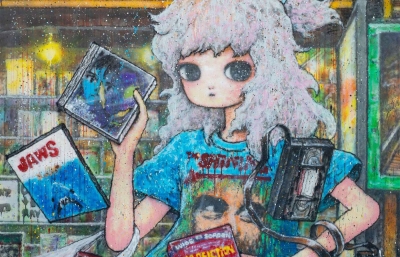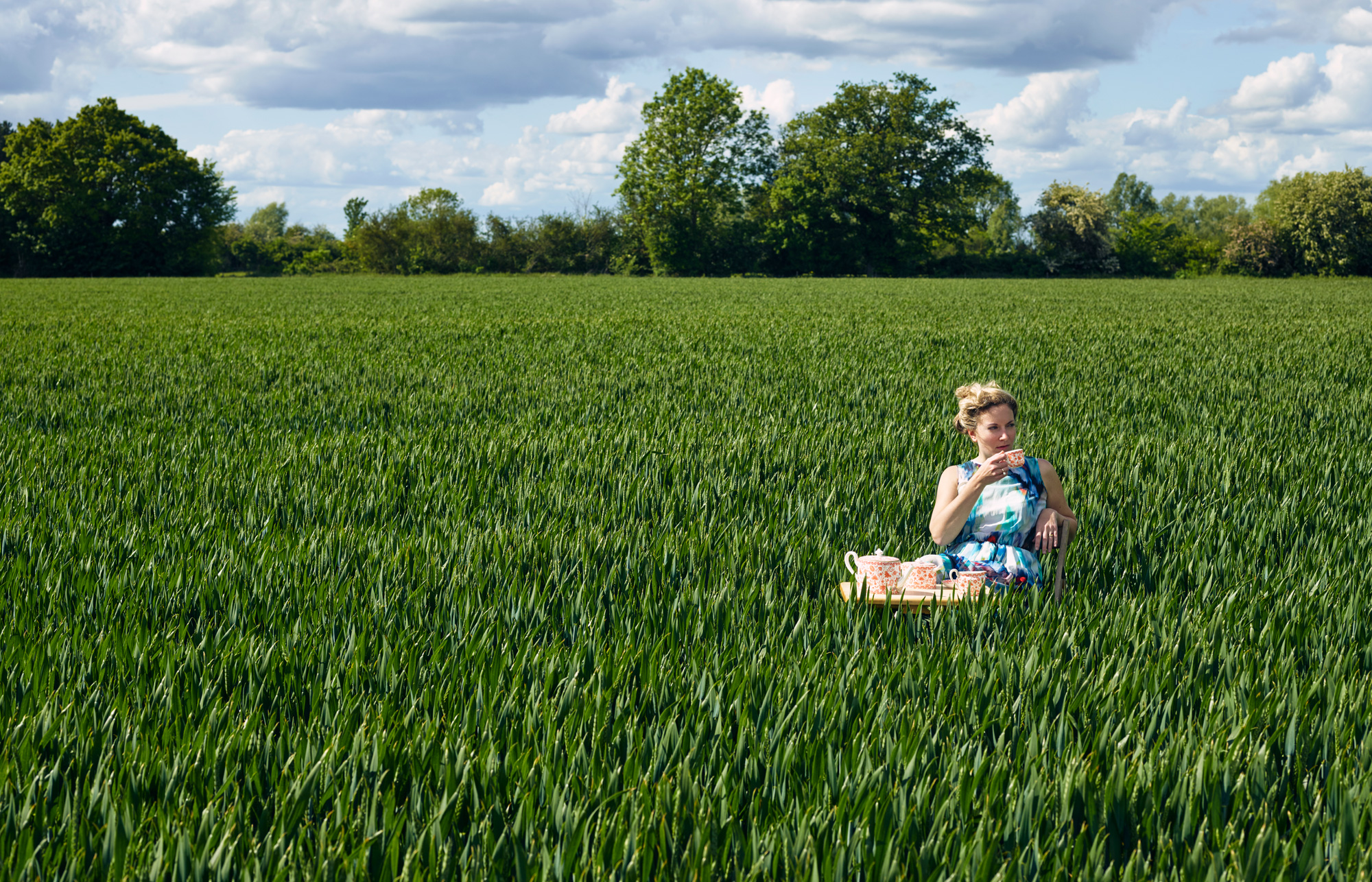
Rebecca Louise Law
Painting on Air
Interview by Alex Nicholson // Portrait by Fabio Affuso
Standing amid a suspended cloud of thousands of flowers cascading from the ceiling, I realized that an installation by Rebecca Louise Law can be appreciated with eyes closed as well as open; physically looking at it is just one aspect of the experience. Recalling the wonder and innocence of a childhood spent outdoors, of lying in a field or playing in the garden, Law seeks to transform the physical senses evoked by being in nature into a work of art. “I wanted to paint in the air,” she explains, and “I needed a material to help me do this.”
Using the flower as sculptural material allows Law to create a space where the viewer can experience being inside the art, absorbing fragrances and textures, observing not only the beauty and colors of life, but the eventual decay, death, and preservation. Maintaining a “no waste” policy, every part of the material is repurposed into a new work of art. “I have always longed to create an art that enables human kind to have a serenity within nature,” Law said of a recent UK exhibition at the Kew Royal Botanic Gardens, “transporting them into a space without the constraints of time and where there is still life in death.” After suspending a decade’s worth of preserved materials into one sculptural piece at Chandran Gallery in San Francisco, Law spoke to me from Malaysia where she was working on several permanent encased artworks, completing the final stage in the cycle of her creative process.
Alex Nicholson: In the introduction of your exhibition and book, Life in Death, you discuss how your father was a gardener and the attic of your house was always filled with flowers dried by your mom. How did she use the dried flowers?
Rebecca Louise Law: My mother and father grew flowers in an allotment in our village. They would sell small bunches of dried flowers at the front garden gate of our home. My mother often made art, cards and decorations with dried flowers, too.
Do you garden as well? Or are you over working with flowers by the time you get home?
Growing up with the luxury of having a gardener as my father made me lazy in the garden. My father often prunes my tiny garden, and I have no problem with letting it overgrow time and time again. My home is full of dried flowers, and if we ever have fresh flowers in the house, they would have been bought and arranged by my husband.
Do you recall a specific moment when you realized that you wanted to be an artist, or was it something more gradual?
I always wanted to be an artist, nothing else interested me.
What is the process for sourcing all of the flowers you use? Do you use local farms in the countries where you work?
I like to source the flowers locally, and a lot of research will be put into this. My ideal is to have site-specific artworks that come from the land that I am working in. Most of my installations are locally sourced, and I love finding out what the local cultivated flowers are. Sadly, for some artworks, I have to import the flowers. On these occasions, I use flowers that I have sourced myself in the UK. If I need expertly dried flowers, they come from a farm in France, and for any other flower, I have a supplier in Holland who will hunt high and low for all species, dried or fresh.
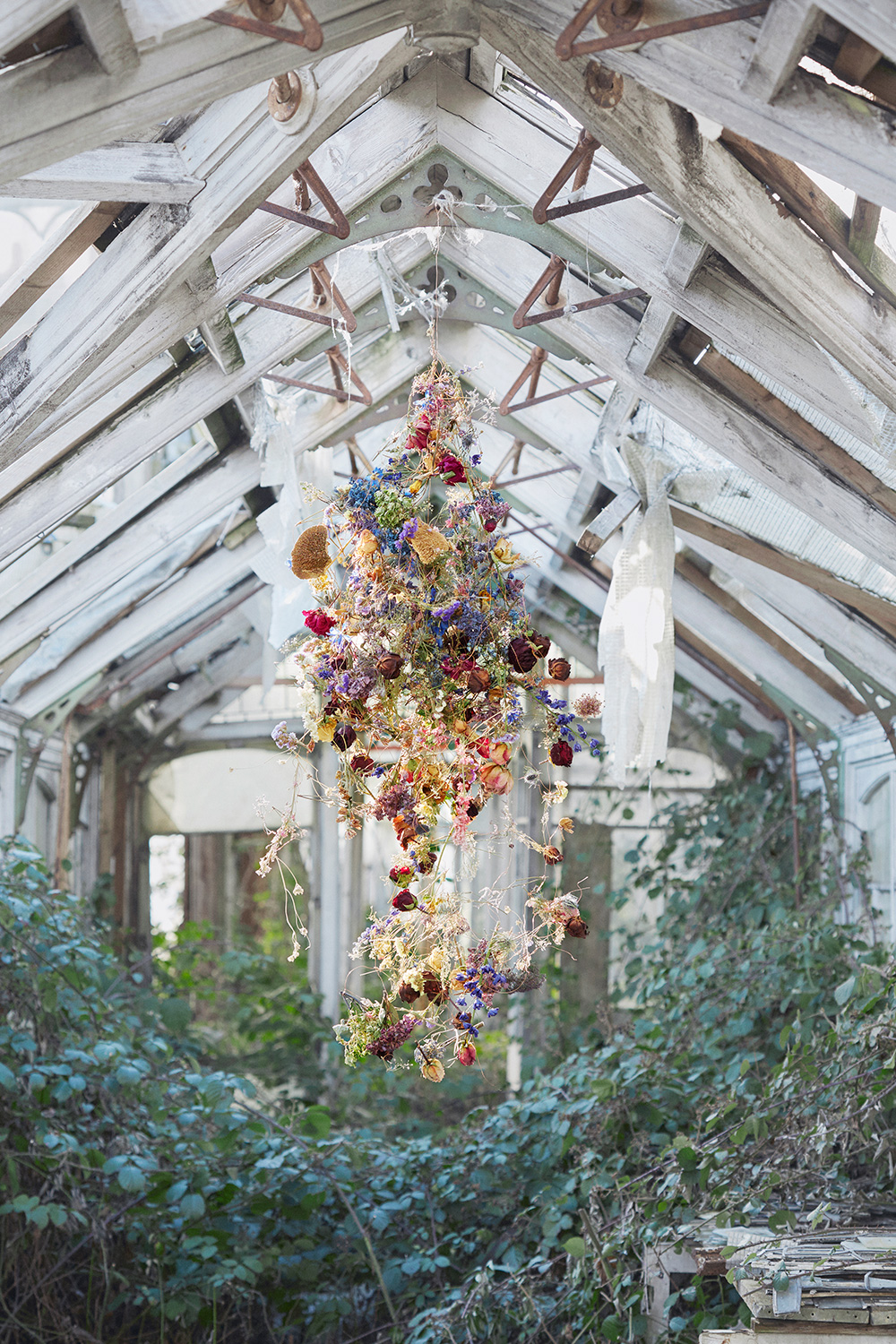
Your studio is next to the Colombia flower market in London. Do you often visit other markets around the world? Do you have a favorite? I once visited a flower market in Hanoi and loved watching people balance mountains of flowers on their bicycles and motorcycles and head off into the morning to sell them throughout the city.
The last market that I went to that amazed me was in Doha. The baskets of dried herbs and flowers were abundant, next to stalls of falcons ready to adorn a sheikh. Hong Kong is incredible for its markets, and the bird market is unique. Owning a bird for decoration upsets and fascinates me. Some markets make you feel like you have traveled back in time. I think my favourite is Spitalfields antique market in London on a Thursday. I love antiques and finding old, beautifully crafted objects.
From funerals to weddings, there are so many traditions surrounding flowers. They convey such a wide range of emotions, from sorrow to happiness and love. How do you draw on these varying rituals and traditions in your work?
Each work is made with sensitivity to the emotions that a flower can evoke. People have responded with total elation or also deep sorrow. Flowers are used throughout history to mark an occasion, happy and sad. These moments usually last a day, along with the flower. I preserve every flower to hold on to these moments, and by postponing decay, I want to create a space that the viewer can revisit, a place that may trigger a past memory or emotion again and again.
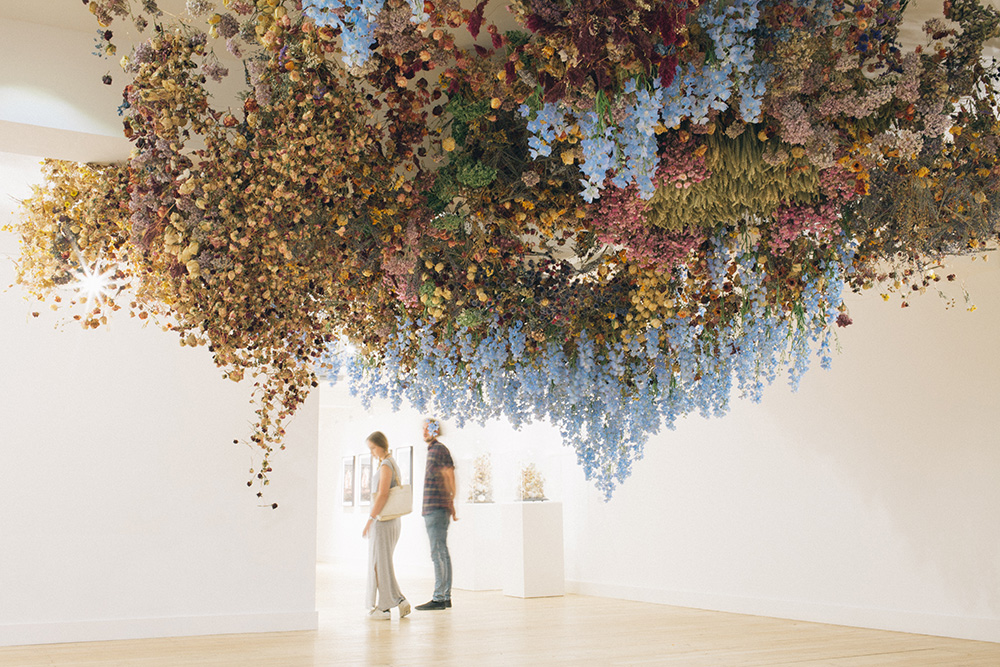
With different flowers having different meanings, depending on the culture, where have you encountered a wide variance of cultural differences in what a certain type of flower symbolizes?
Every country has a native flower and its own symbolism connected to it. White lilies represent death in some countries and life in others. I’ve struggled with bringing dried flowers into cultures who observe the tradition of Feng Shui, as they are thought to have a negative energy. There is much debate about this, and many patrons have argued that my work gives life rather than death.
Do you have a favorite ritual involving flowers that you’ve encountered in your research?
After working in Greece, I can’t walk past any herbs without brushing them through my hands. China gave me so many floral teas, and I love trying new teas. I think the Japanese tea ceremony is the most sacred ritual I have learnt. My own ritual is lying under an artwork once I’ve finished and just taking it in.
I was drawn to lay on the floor under all the flowers too, I’m glad to know that’s one way they were intended to be experienced! Do you have a favorite flower?
The Garden Rose (in a garden).
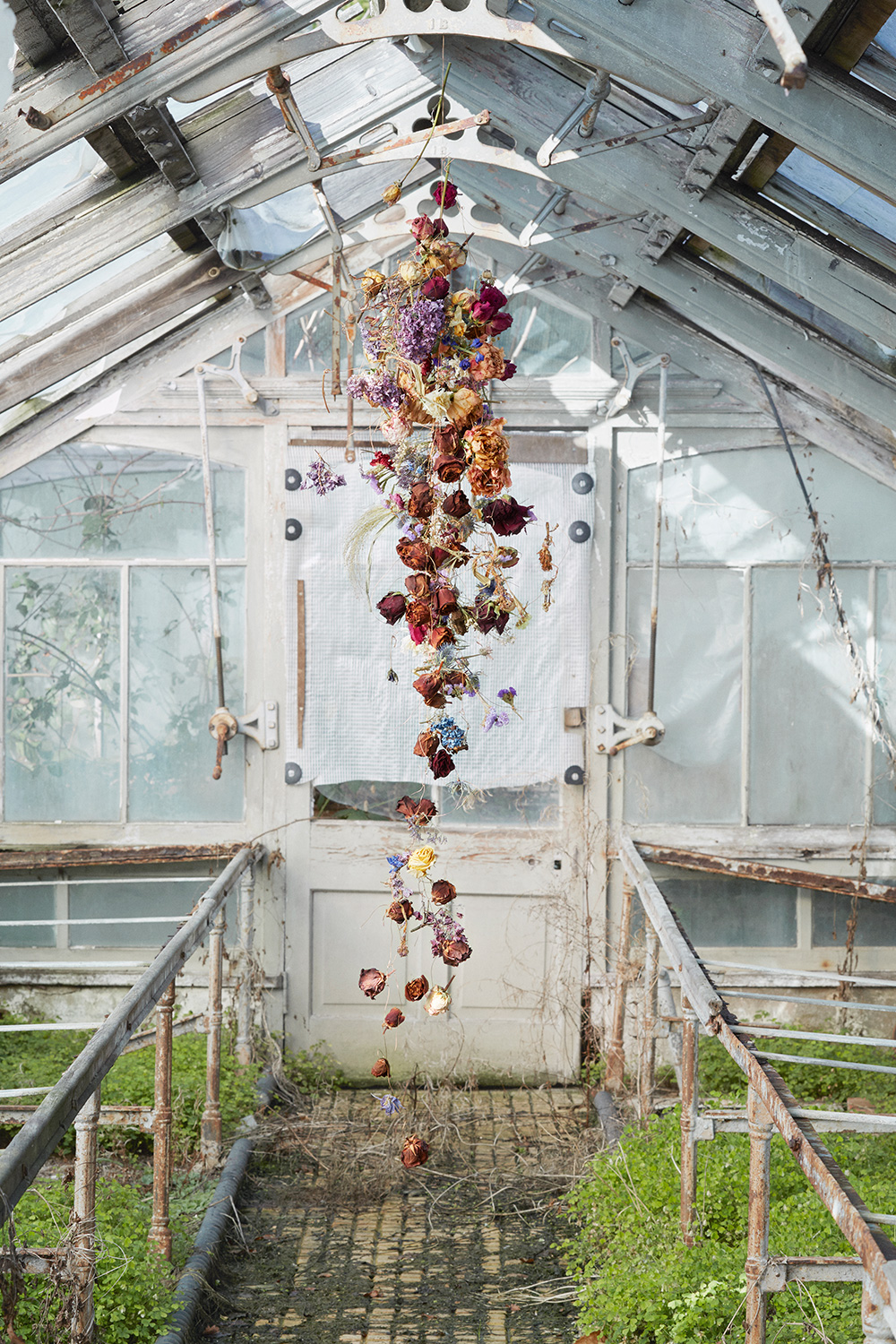
I was able to visit your first exhibition at Chandran Gallery multiple times and watch the flowers slowly change. At your current exhibition there, Intertwine, the flowers are already preserved. The dried flowers have a very different sense of beauty to them. Can you describe the different energies emanating from fresh and dried flowers?
A dried flower holds time. A fresh flower holds a moment, and both are equally special. The beauty of a dried flower is being able to revisit it and observe it as a preserved object of the earth, a perfect form of nature that holds onto its fragility.
The fragrance of the flowers is something else you don't really consider if you aren't able to visit the installations in person. Scent is not often part of an art exhibit. In your book, you recall wanting to bottle the excitement and freedom you feel being surrounded by nature. Was sense of smell an experience you were referencing?
When I swapped my paints for flowers, the main draw of the flower was its many dimensions. Suddenly I could use a material that changed in shape, texture, colour, and smell. I loved natural art and I was excited to create something that could evoke more than one sense, a physical experience. I am not an expert on scent, but the smell of my installations always takes me back to my own childhood. I’ve always wanted my installations to either transport the viewer back to their own memories of nature, or show the viewer my own experience of nature.
You have mentioned that transitioning from painting to working with flowers allowed you to express your ideas much more fully. Do you still paint?
I still paint. I’ll always paint.
From a distance, the flowers appear to be floating, but once you get closer, you can clearly see the wires holding everything together and suspending them in space. When did you first start hanging flowers from the ceiling and tying them together with copper wire, and what sparked that idea?
In 2003, I created my first hanging installation, inspired by the flowers hanging in my parents attic as a child. I had been experimenting with hanging objects for a few years before I knew what direction I wanted to go. I wanted to paint in the air and I wanted my art to be three-dimensional.
I needed a material to help me do this. First, I found the flower that could be preserved in an array of colours and forms, and then in 2004, I found copper wire. I have used this material to hold all of my artworks together ever since and it has never let me down.
Have you experienced anything in your own installations that has surprised you, something you didn't expect to feel or see?
I’m always humbled by the simplicity of working with nature’s beauty.
The cycle of life is something you emphasize in these pieces, and you also try to save all the materials. A flower in nature loses its petals and eventually return to the earth, as does all life. Could you elaborate on the difficulty of flowing against that natural cycle and holding onto and preserving the materials? What is the hardest part of manipulating a natural material to your own vision while trying to maintain its organic form and lifespan?
It feels unnatural to hold onto a material that is intended to enrich the earth, so I suppose I felt slightly guilty postponing this natural flow. However, this new knowledge in preservation has also provided so much to learn and poses a challenge that continually keeps me focused. It is incredibly difficult working with a material that is dying and decaying. Timing is everything.
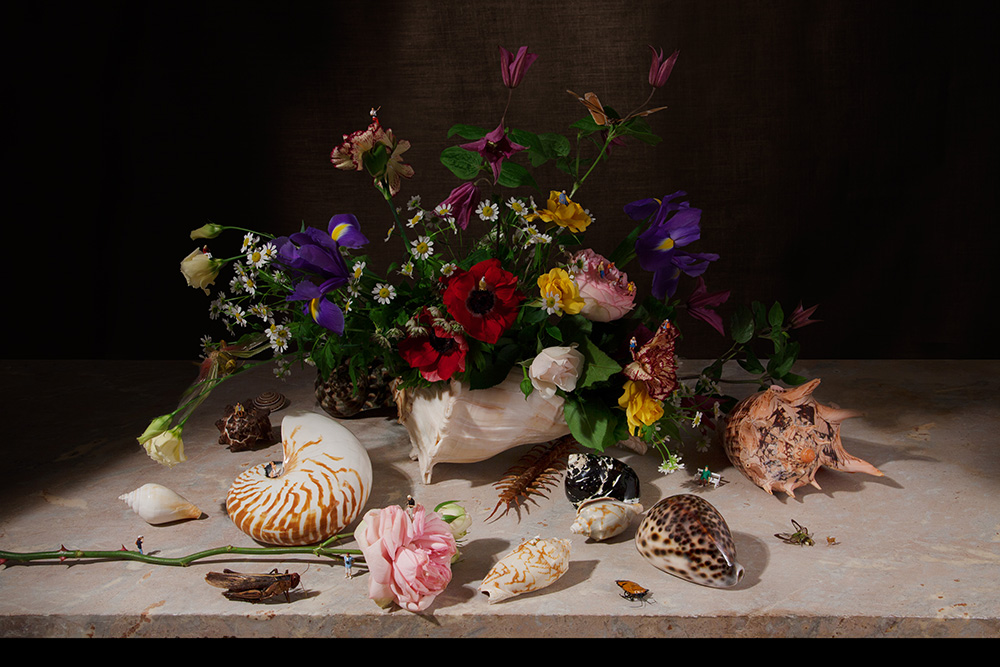
I recently read a book, On Trails, where the author talks about how our idea of "the wilderness" didn't really exist until we needed to escape to it from something else. And there is an often-quoted moment in the documentary Burden of Dreams where Werner Herzog, reflecting on life in the jungle, says, “Taking a close look at what is around us, there is some sort of a harmony. It is the harmony of overwhelming and collective murder... And we have to become humble in front of this overwhelming misery and overwhelming fornication, overwhelming growth, and overwhelming lack of order.” Because most of us don't spend our lives in such a struggle to survive, nature is, understandably, often a romantic concept, and flowers especially, so does this other side of nature, one of chaos, struggle, and death, work its way into your work?
I always wanted to create an artwork that would consume the viewer in nature. But to fully be immersed in nature can be unpleasant, so there needs to be balance and control. I think the fantasy is much nicer than the reality. I’ve played with fully immersive installations and I rarely find a viewer who would step over this boundary and completely lose themselves in nature. I would like to push these natural boundaries further and experiment more with the human interaction in order to be fully consumed in an artwork.
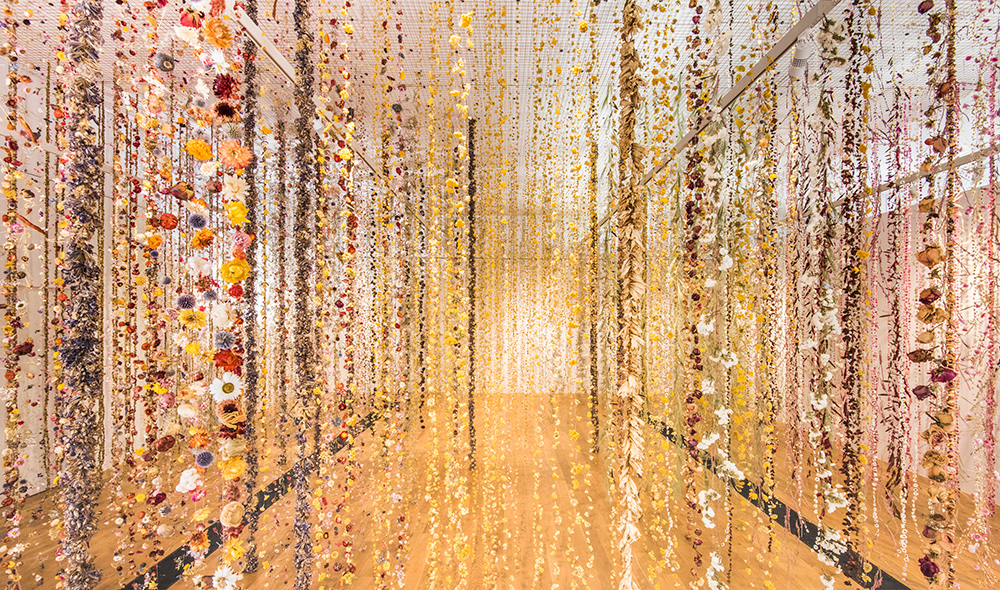
How do you plan installations? Do you create detailed drawings of what each space will look like? How do you keep track of inspiration, ideas, and concepts?
My installations are dreams, and slowly realized. Because working with flowers is so expensive, my thoughts are much further ahead than my physical work. If I have a patron who cannot visualize the concept or work, I’ll draw sketches and detailed plans. But I love to have the freedom to create without restraints. I have a constant notebook that holds many thoughts and dreams.
I assume flowers catch your eye in all sorts of things. Are there films that have inspired you?
I’m inspired by physically being in nature, and have never found a film that can capture this fully, even in my own work. However, I love film. 12 Years a Slave, Life is Beautiful and Farewell My Concubine have never left my mind.
I’ve heard that you’re working on a film yourself. Tell me about it.
I was given a book at university called The Sinful Priest by Emile Zola. The whole book was written using flowers and nature to describe a story. I found the use of flowers in words so inspirational that I wanted to capture an essence of the book in homage to this inspiration. A friend offered to help me make this possible by directing one chapter with me, a scene where the heroine dies. It is a new medium and I have learnt a crazy amount about films, so I still feel completely out of my depth. I saw every scene as an installation and it was hard to let go and allow everyone to have a part of the art. The film is a short entitled “The Death of Albine” and it will be released in March 2018.
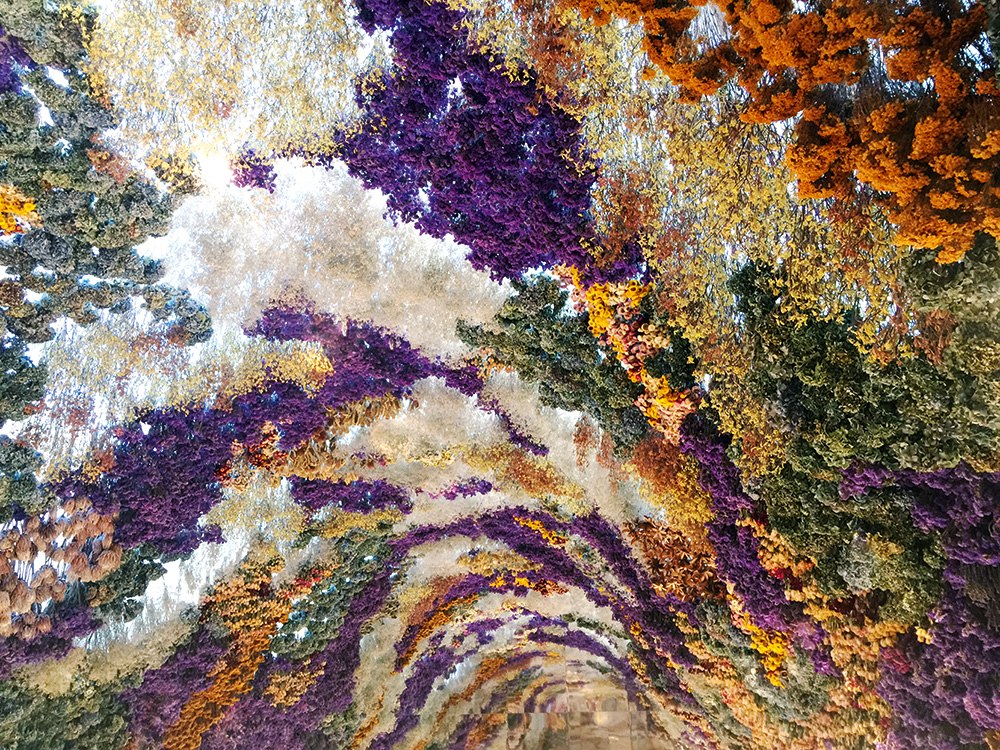
Do you still spend a lot of time outdoors? Where are some of your favorite places to be outside, physical places that inspire your work?
I love to go to remote places in nature. This year I went to the Outer Hebrides in Scotland. The islands are so beautiful, completely inspirational. Today I walked through the jungle in Malaysia. I’m overwhelmed by old trees.
If logistics and money were not an issue, what is your dream project?
The Tate Turbine Hall. I have an installation in my head that I have dreamt of making since University.
rebeccalouiselaw.com



